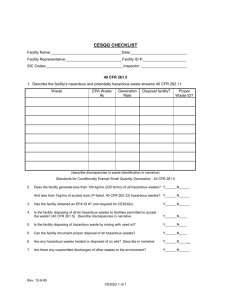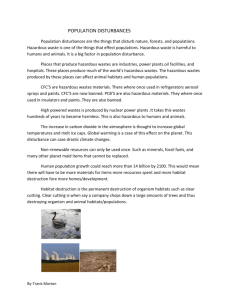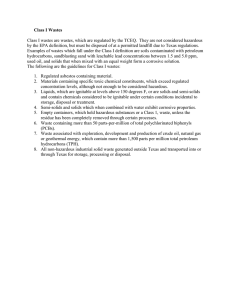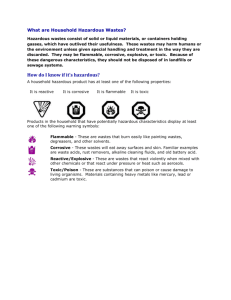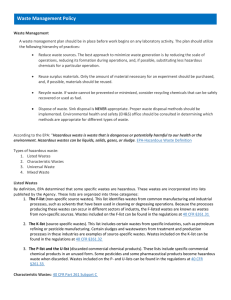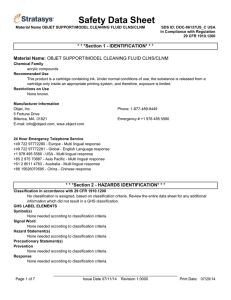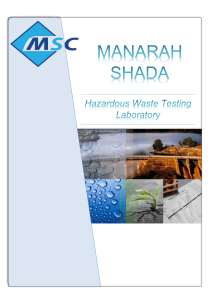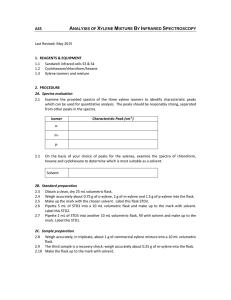CE 529 Hazardous Waste Management Dr. S.K. Ong Problem Set No. 1
advertisement
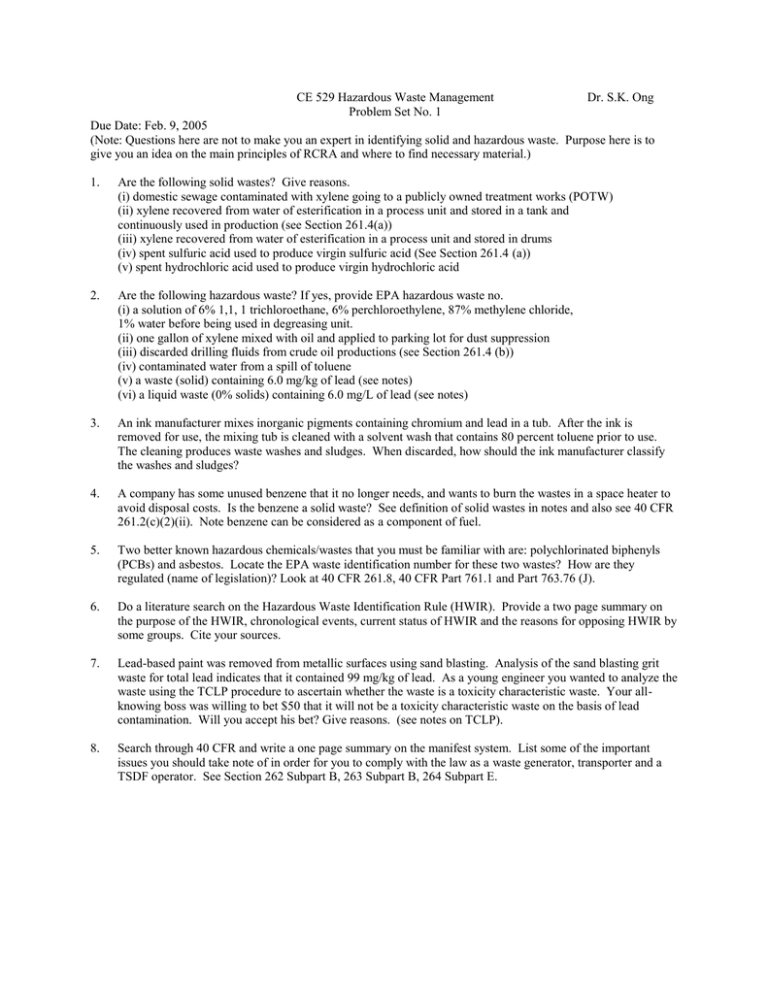
CE 529 Hazardous Waste Management Problem Set No. 1 Dr. S.K. Ong Due Date: Feb. 9, 2005 (Note: Questions here are not to make you an expert in identifying solid and hazardous waste. Purpose here is to give you an idea on the main principles of RCRA and where to find necessary material.) 1. Are the following solid wastes? Give reasons. (i) domestic sewage contaminated with xylene going to a publicly owned treatment works (POTW) (ii) xylene recovered from water of esterification in a process unit and stored in a tank and continuously used in production (see Section 261.4(a)) (iii) xylene recovered from water of esterification in a process unit and stored in drums (iv) spent sulfuric acid used to produce virgin sulfuric acid (See Section 261.4 (a)) (v) spent hydrochloric acid used to produce virgin hydrochloric acid 2. Are the following hazardous waste? If yes, provide EPA hazardous waste no. (i) a solution of 6% 1,1, 1 trichloroethane, 6% perchloroethylene, 87% methylene chloride, 1% water before being used in degreasing unit. (ii) one gallon of xylene mixed with oil and applied to parking lot for dust suppression (iii) discarded drilling fluids from crude oil productions (see Section 261.4 (b)) (iv) contaminated water from a spill of toluene (v) a waste (solid) containing 6.0 mg/kg of lead (see notes) (vi) a liquid waste (0% solids) containing 6.0 mg/L of lead (see notes) 3. An ink manufacturer mixes inorganic pigments containing chromium and lead in a tub. After the ink is removed for use, the mixing tub is cleaned with a solvent wash that contains 80 percent toluene prior to use. The cleaning produces waste washes and sludges. When discarded, how should the ink manufacturer classify the washes and sludges? 4. A company has some unused benzene that it no longer needs, and wants to burn the wastes in a space heater to avoid disposal costs. Is the benzene a solid waste? See definition of solid wastes in notes and also see 40 CFR 261.2(c)(2)(ii). Note benzene can be considered as a component of fuel. 5. Two better known hazardous chemicals/wastes that you must be familiar with are: polychlorinated biphenyls (PCBs) and asbestos. Locate the EPA waste identification number for these two wastes? How are they regulated (name of legislation)? Look at 40 CFR 261.8, 40 CFR Part 761.1 and Part 763.76 (J). 6. Do a literature search on the Hazardous Waste Identification Rule (HWIR). Provide a two page summary on the purpose of the HWIR, chronological events, current status of HWIR and the reasons for opposing HWIR by some groups. Cite your sources. 7. Lead-based paint was removed from metallic surfaces using sand blasting. Analysis of the sand blasting grit waste for total lead indicates that it contained 99 mg/kg of lead. As a young engineer you wanted to analyze the waste using the TCLP procedure to ascertain whether the waste is a toxicity characteristic waste. Your allknowing boss was willing to bet $50 that it will not be a toxicity characteristic waste on the basis of lead contamination. Will you accept his bet? Give reasons. (see notes on TCLP). 8. Search through 40 CFR and write a one page summary on the manifest system. List some of the important issues you should take note of in order for you to comply with the law as a waste generator, transporter and a TSDF operator. See Section 262 Subpart B, 263 Subpart B, 264 Subpart E.
